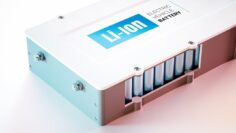It is not automatically an advantage if a company is the “first mover” in a new industry. It has to explain new terms such as that of an “algae-based bioeconomy.” Never heard of it? What’s that supposed to be? And what is it good for? Listed innovators have a particularly hard time, because shareholders tend to be more comfortable with their due diligence than private equity investors. They like to jump on trends, look for peer companies and prefer to invest in sectors. They avoid singularities and are only there when market success is already apparent, as with Biontech (NASDAQ: BNTX; no one believed in their MRNA technology for a long time either).
The algae industry needs an Elon Musk or a Bill Gates to promote it
We consider Canadian microcap Pond Technologies (TSXV: POND; FRA: 4O0) to be one such singular company. The company is a classic case of mispricing by the stock market and most especially the Canadian stock market, where commodity companies still dominate. Fast investors don’t appreciate the unique technology platform Pond has created over more than a decade of R&D. Why has it taken so long? If it was any good, it should be making money by now, are typical statements. Few see the big picture: We claim the world needs an algae-based bioeconomy! One would wish for the industry a visionary like Elon Musk, who could move more capital with a tweet in this direction than hundreds of funds combined. The topic of algae-based bioeconomy would also deserve to be discovered by the “climate” generation. Pond is one of the first movers in this just-forming industry that will transform value creation across diverse sectors such as biotechnology, nutritional supplements, animal nutrition, fish farming and especially agriculture.
Pond makes algae growth digital: LEDs are better than the sun
Pond has spent more than a decade of research developing a unique platform for algae farming that is disruptive because it overcomes the limitations of traditional algae farming. Today, the industry still clings to the preconception that algae require sun to grow. While this is usually true, it limits scalability. Sun requires huge surfaces due to the shallow penetration of light, and thus a huge footprint, plus evaporation and contamination (in open systems), shading and cooling, but most importantly, dependence on weather, day and night cycles, and geographic location. It is no coincidence that millions and millions in funding for algae projects in the EU have flowed to southern countries. Until now, algae and the sun have belonged together like solar panels and the desert (keyword Dersertech).
But Pond represents a paradigm shift. The thesis: artificial LED light works better with algae than the sun! The Pond technology platform relies on algae growth under fully controlled growth conditions. Pond uses proprietary LEDs in its photobioreactors and feeds the algae with industrial CO2 waste at hundreds of times the concentration of CO2 in the air. It’s a veritable land of milk and honey for algae. Pond gives the algae up to 5 percent CO2 under ideal lighting conditions, while the normal CO2 content of the air is only 0.04%. Pond thus makes algae growth digitally controllable! The company thus achieves a number of desirable goals:
1. microalgae cultivation becomes geographically independent, working just as well in Iceland as (later) on Mars.
2. photosynthesis can take place 24/7 under ideal conditions; the LEDs emit only the wavelengths that can be utilized by the plant receptors.
3. productivity per area increases exponentially because Pond can go vertical with the 3-dimensional design of its bioreactors.

Arable crops cannot compete with water-based microalgae because algae directly produce the desired proteins/oils without the need to form “worthless” biomass in the form of stems and foliage. Light uniformly surrounds the floating algae throughout the tank. This is especially important for the future mass production of vegetable proteins and oils, for the production of which virgin forests are cleared and soils are poisoned today; think, for example, of the replacement of soy protein or of palm oil).
Arable plants cannot compete with water-based microalgae because algae produce the desired proteins/oils directly without the need to form “worthless” biomass in the form of stems and foliage. Light uniformly surrounds the floating algae throughout the tank. This is especially important for the future mass production of vegetable proteins and oils, for the production of which virgin forests are cleared and soils are poisoned today; think, for example, of the replacement of soy protein or of palm oil).
Why doesn’t this algae-based bioeconomy exist yet? Part of the answer is that Pond, and in fact every algae producer to date, faces unfair competition, especially when it comes to commodities like soy or fish oil/fish meal. We allow valuable wild fish to be fished off West Africa and the cheap fishmeal derived from it to be fed to farmed salmon, which then ends up cheaply on our plates. The destruction of rainforest for the cultivation of soy is not accounted for honestly either. The issue is well known, but nothing changes. You have to see the hold of a soybean freighter once to appreciate the huge volumes that are moved.
Digression: We are in a protein crisis that will not be solved by rich people preferring to eat veggie burgers. While this helps our own well-being, it does not change the fact that there are more and more people in the world who want to afford meat and do so. Whether we like it or not, we need more vegetable protein for fish and animal farming if we want to curb overfishing of the oceans or the consumption of soil. Especially the animal feed industry with its bad image should rethink! It needs little imagination to imagine how difficult this will be for this purely price-driven industry. (see also the chapter on agriculture in Bill Gates’ book “How to avoid a Climate disaster”)
The objection raised by traditional “solar” algae growers against Pond technology is that Pond uses electricity, but the sun is “free”. However, this argument is invalidated when the energy used comes from sustainable sources rather than fossil fuels. Pond technology is ideally suited for sharing with biogas plants or with geothermal power projects (Iceland!). And once intermediate storage is satisfactorily solved, the combination with solar energy is also reasonable and scalable.

Since Pond also offers its technology in standardized containers, a few containers can already produce an extremely large amount of biomass with a minimal footprint. For example, a standard 40-foot container holds about 50,000 liters and can still produce 16.5 tons of algae biomass per year, according to Pond’s data. Four containers with a capacity of 200,000 liters could produce as much as 66.5 tons of biomass. A commercial plant with 1.5 million liters would already produce 3 tons of biomass per day. Harvesting happens continuously, not just once a year. No amount of intensive farming can do that!

Biotechnology trump card: Microalgae as microscopic bioreactors
Pond has another trump card up its sleeve that will accelerate the move toward an algae-based bioeconomy. It’s applications in biotechnology. A few weeks ago, Pond partnered with a Fortune 500 company. That alone is an important validation of the technology. Pond’s platform will be used to produce genetically programmed microalgae for medical diagnostics. Specifically, the goal is to cost-effectively and mass-produce human antibodies for COVID test kits that function like pregnancy tests. The encouraging thing is that the size of the equipment required for this is very manageable. In the future, a 100-liter tank can be used to biosynthesize substances that have an equivalent value of millions of dollars – in stark contrast to the previously hopeless competition with commodities. Future cash flow from biotechnology could cross-subsidize the development of larger commodity-sized plants in the future. But Pond is already setting its sights on larger projects: this is possible because higher-value plant pigments can also be extracted at the same time from algae produced for animal feed, for example phycocyanin – the remaining extract is then still an outstanding protein feed with positive effects that have now been scientifically proven (especially in chicken farming).
Conclusion: There is a lot of future in this small company, which is currently valued at just CAD 22 million on the Canadian stock exchange and is also carrying debts. The (too) low stock market value together with the lack of liquidity currently act like a tightened handbrake. If Pond were not an underfunded microcap on the Canadian stock exchange, but a hip Silicon Valley startup (like Beyond Meat; NASDAQ: BYND), the same idea would easily raise $100 million in venture capital from private equity. But apparently not even the U.S. and Canadian markets communicate properly with each other – one doesn’t take the other for granted. The big ESG funds (this topic is also covered, of course) don’t have Pond on their radar and even if they found Pond interesting, they couldn’t invest at all due to their regulations. The liquidity and the stock market value are too low for that. Pond can currently only be helped by the swarm intelligence of investors. Only a stock market price close to 1 CAD and liquid trading will put the company in a position to raise urgently needed growth capital on a sufficient scale.
Anyone dreaming of new forms of agriculture cannot ignore the production of biomass through microalgae cultivation. With biogas plants, even a circular economy is possible. The algae-based bioeconomy will also become an issue for the chemical industry, because microalgae can do more and different things than yeast fungi, which are widely used today to produce pure substances by biosynthesis. One conceivable application would be to use microalgae to produce pure cannabinoids. The algae-based bioeconomy is only in its infancy and there is much to research and develop. We look forward to it and wish Pond that its disruptive platform technology finally gets the attention it deserves!
Risk notice: GOLDINVEST Consulting GmbH publishes comments, analyses and news on https://goldinvest.de. These contents serve exclusively the information of the readers and do not represent any kind of call to action, neither explicitly nor implicitly they are to be understood as an assurance of possible price developments. Furthermore, they do not in any way replace individual expert investment advice and do not constitute an offer to sell the stock(s) discussed or a solicitation to buy or sell securities. This is expressly not a financial analysis, but an advertising / journalistic text. Readers who make investment decisions or carry out transactions on the basis of the information provided here do so entirely at their own risk. There is no contractual relationship between the GOLDINVEST Consulting GmbH and its readers or the users of its offers, because our information refers only to the company, but not to the investment decision of the reader.
The acquisition of securities involves high risks, which can lead to a total loss of the invested capital. The information published by GOLDINVEST Consulting GmbH and its authors is based on careful research. Nevertheless, any liability for financial losses or the content guarantee for topicality, correctness, adequacy and completeness of the articles offered here is expressly excluded. Please also note our terms of use.
According to §34b WpHG and § 48f Abs. 5 BörseG (Austria) we would like to point out that GOLDINVEST Consulting GmbH and/or partners, principals or employees of GOLDINVEST Consulting GmbH hold or held shares of Pond Technologies Holdings and therefore a conflict of interest exists. GOLDINVEST Consulting GmbH also reserves the right to buy or sell shares of the company at any time. Furthermore, GOLDINVEST Consulting GmbH is remunerated by Pond Technologies Holdings for reporting on the company. This is another clear conflict of interest.













